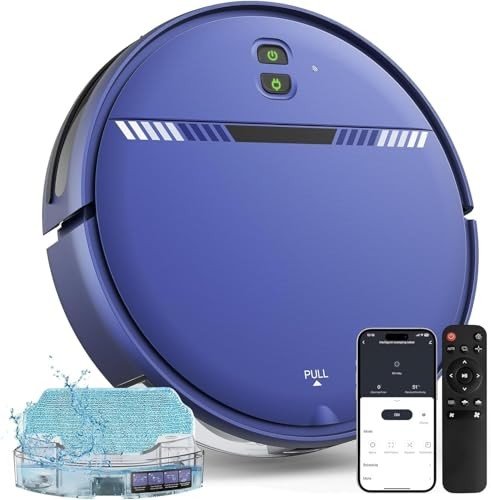10 Meetups About Robotic Vacuums You Should Attend
The Rise of Robotic Vacuums: A Comprehensive Overview
In today's fast-paced world, technology is consistently developing to make our lives much easier, and the home cleaning segment has actually seen among the most noteworthy improvements: the robotic vacuum. This intelligent gadget not just saves time and energy but also makes sure a cleaner home environment with very little manual effort. This post looks into the interesting evolution of robotic vacuums, how they work, their advantages and drawbacks, market patterns, and future directions.
The Evolution of Robotic Vacuums
Robotic vacuums have actually made excellent strides given that their beginning in the late 1990s. The first commercially offered robotic vacuum was introduced in 1996, followed by different designs, each designed with escalating elegance and functions. Here is a short timeline of robotic vacuum advancement:
Year
Occasion
1996
Launch of the very first robotic vacuum (Electrolux's Trilobite)
2002
iRobot Roomba is launched, making robotics mainstream
2010
Introduction of advanced mapping and navigation functions
2017
Combination of AI and smart home compatibility
2022
Release of highly advanced designs featuring self-emptying dustbins
How Robotic Vacuums Work
Robotic vacuums utilize a combination of sensing units, algorithms, and expert system to browse areas efficiently. Here's how they operate:
Navigation: Most robotic vacuums use a series of sensing units to spot barriers and navigate around furniture. Some high-end designs incorporate LIDAR (Light Detection and Ranging) technology to create detailed maps of the environment.
Cleaning Mechanisms: They are equipped with rotating brushes and suction systems to gather debris from numerous surface areas. Depending upon the design, they can transition in between carpets and hard floors seamlessly.
Smart Features: Many contemporary robotic vacuums are Wi-Fi made it possible for, allowing users to manage them from another location through a mobile phone app. Features typically include scheduling, drawing up cleaning courses, and combination with other smart home gadgets.
Self-Maintenance: High-end units may come with self-emptying capabilities, where the robot can dock itself to a base that collects dust and particles without human intervention.
Benefits of Robotic Vacuums
Robotic vacuums have actually garnered immense popularity, and for good reasons. Here are some of the most significant benefits:
- Time-Saving: Automating the cleaning procedure allows users to take part in other meaningful activities.
- Effective Cleaning: Regular cleaning can be easily achieved by arranging the robot to clean day-to-day or weekly, keeping dirt and allergens at manageable levels.
- Compact Design: Their small size enables them to fit under furnishings and in hard-to-reach locations.
Despite their benefits, robotic vacuums likewise include restrictions:
- Limited suction power: While they work for maintaining clean floorings, they might not match the deep cleaning of conventional vacuums.
- Battery life: Most designs require to go back to their dock after a particular duration of usage.
- Preliminary costs: High-quality robotic vacuums can be costly, though costs have actually been decreasing with developments in innovation.
Current Market Trends
The market for robotic vacuums is expanding rapidly. According to a current market research report, the international robotic vacuum cleaner market is anticipated to reach ₤ 7.2 billion by 2027, growing at a CAGR of 23.5%, driven by a number of aspects:
Increased Adoption of Smart Home Devices
The increase of smart home technology has actually encouraged customers to integrate robotic vacuums into their homes. Lots of robotic vacuums work seamlessly with home assistants like Amazon Alexa and Google Assistant, streamlining their operation.
Advances in Robotics and AI
As the technology behind robotic vacuums develops, designs are being equipped with much better navigation systems, AI algorithms for learning individual cleaning habits, and improved features for particular floor types.
Focus on Health and Hygiene
The heightened awareness of cleanliness and hygiene, particularly due to current international events, has driven consumers to purchase devices that regularly eliminate dust, irritants, and pet hair from their homes.
Future Directions
As technology advances, robotic vacuums are anticipated to develop even more, including features that increase their efficiency in families. Prepared for advancements include:
- Improved AI Learning: With improvements in machine knowing, future models will be much better at understanding their environment and adapting to the needs of their owners.
- Multi-Purpose Design: Potential future models may include features for mopping, sanitizing, and air purification in addition to vacuuming.
- Sustainability: As eco-consciousness rises, makers are most likely to concentrate on energy effectiveness, recyclable products, and sustainable production practices.
FAQs About Robotic Vacuums
**1. Can robotic vacuums vacuum on carpet?Yes, most robotic vacuums can transition in between different floor types, including carpets and hard floorings. 2. How often must I run my robotic vacuum?It depends
on your family's cleaning needs, however lots of users
arrange their robotic vacuums to run daily or every couple of days. 3. Are robotic vacuums worth the investment?For many consumers, the time saved and benefit used by robotic vacuums makes them rewarding,
**
particularly for hectic households. 4. Can I manage my robotic vacuum remotely?Most modern robotic vacuums can be managed through a smartphone app, enabling for scheduling and monitoring from anywhere. 5. Do I still require a traditional vacuum cleaner?While robotic vacuums effectively manage daily cleaning, a standard vacuum might still be needed for deep cleans or toughermesses. The advancement of robotic vacuums shows a significant leap in automating household chores, combining innovative innovation with easy to use operation. As the trend toward smart homes continues and consumer expectations evolve, robotic vacuums will likely keep improving, offering ever-greater convenience and performance in maintaining clean living spaces. As automatic cleaning robot consider the potential benefits and limitations of these devices, it is clear that robotic vacuums have actually strengthened their reputation as vital tools in modern-day home management. 